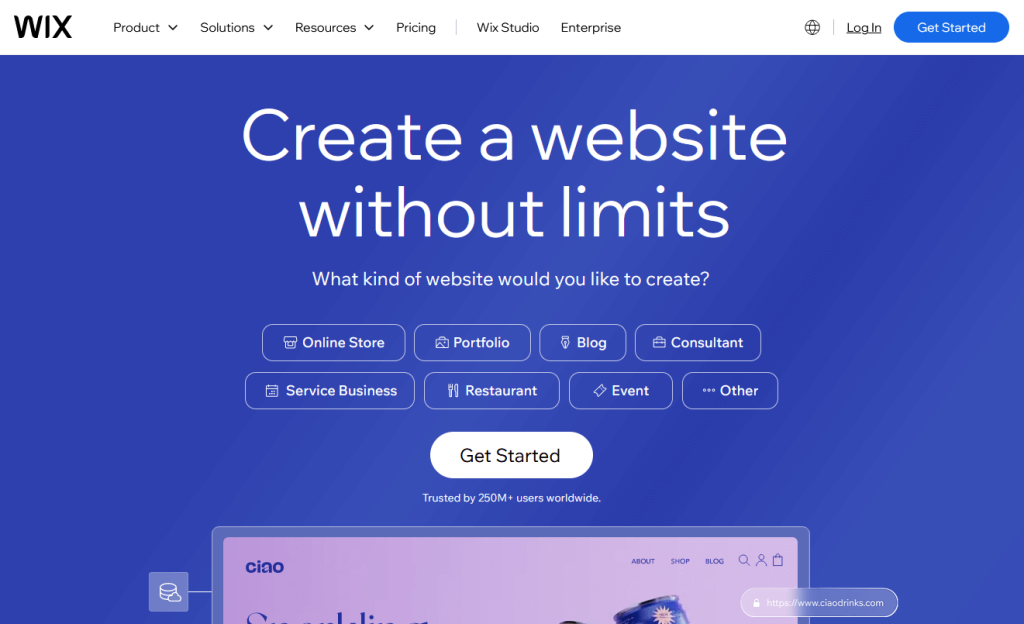Evaluating the Top Blogging Platforms of 2024
1. WordPress.org: The Customization King
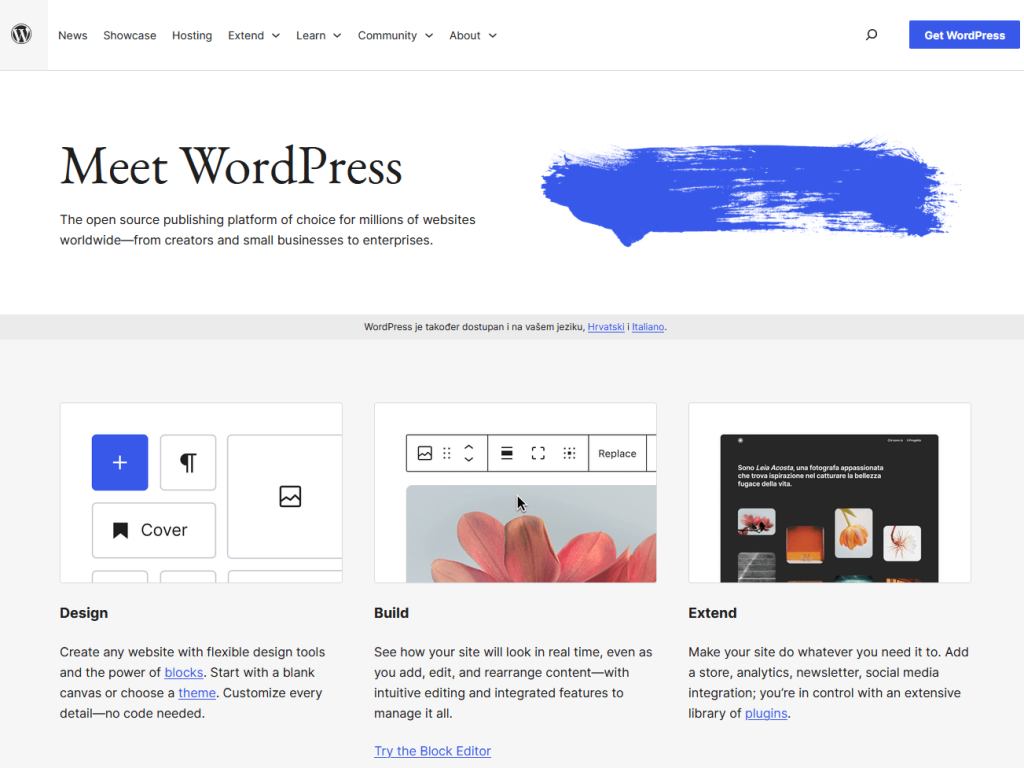
When it comes to choosing the best blogging platform in 2024, WordPress remains a top contender.
Known for its flexibility and extensive features, WordPress is made for bloggers of all levels, from beginners to seasoned professionals.
Users benefit from WordPress.org’s SEO-friendly structure, enhancing their site’s visibility on search engines.
However, it demands a certain level of technical proficiency for setup, security, and maintenance.
To help you make an informed decision, here’s a detailed look at the most important pros and cons of using WordPress for blogging in 2024.
| Pros of WordPress | Cons of WordPress |
| 1. Extensive Customization: WordPress offers thousands of themes and plugins, allowing bloggers to tailor their sites to their exact preferences and needs. | 1. Learning Curve: For beginners, WordPress can be overwhelming due to its vast array of options and customization features. |
| 2. SEO-Friendly: With numerous SEO plugins like Yoast SEO, WordPress makes it easier for blogs to rank higher in search engine results, driving more traffic to the site. | 2. Maintenance: WordPress sites require regular updates and maintenance for themes, plugins, and the core platform to ensure security and functionality. |
| 3. Large Community Support: WordPress has a massive community of users and developers, making it easy to find support, tutorials, and advice for managing your blog. | 3. Speed Issues: Without proper optimization, WordPress sites can become slow, affecting user experience and SEO rankings. |
| 4. Scalability: WordPress is capable of handling blogs of any size, from small personal projects to large corporate sites, without sacrificing performance. | 4. Security Concerns: While WordPress is secure, its popularity makes it a target for hackers. Regular maintenance and security measures are necessary to protect your site. |
| 5. Content Management Flexibility: WordPress excels in content management, offering features like scheduling posts, revisions history, and easy multimedia integration. | 5. Cost: While WordPress itself is free, many themes, plugins, and hosting services are not, which can add up for a fully functional and customized blog. |
In conclusion, WordPress stands out as a powerful blogging platform in 2024, offering unparalleled customization and functionality.
However, potential bloggers should consider the learning curve, maintenance requirements, and associated costs before diving in.
2. Wix
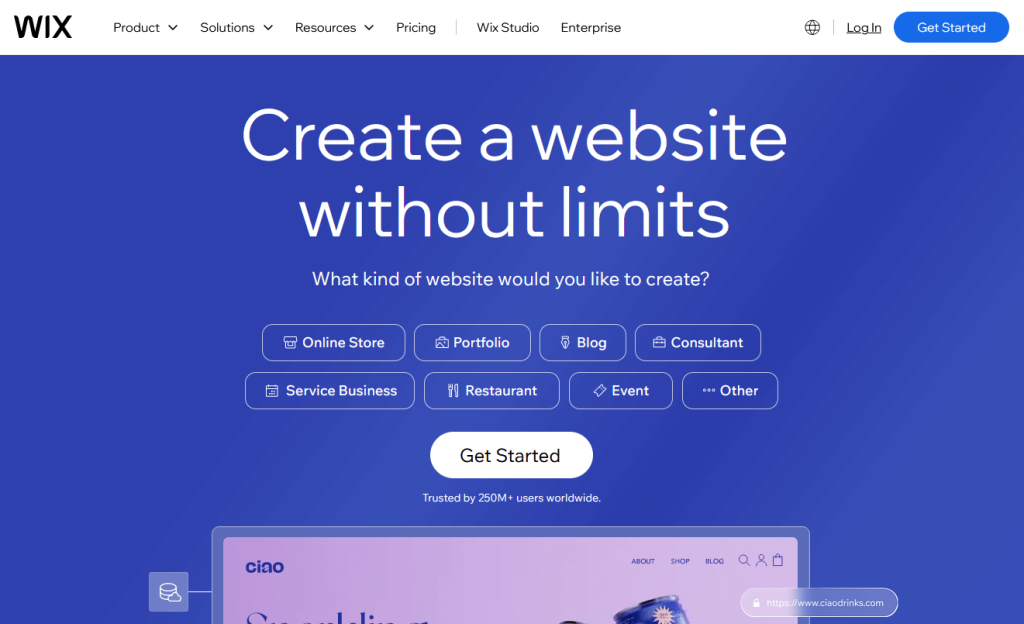
Wix stands out for its intuitive design and ease of use, making it a go-to for bloggers prioritizing quick setup and visual appeal.
The platform offers a drag-and-drop editor, enabling users to create custom layouts without coding knowledge.
Wix’s array of templates caters to various blogging niches, while its SEO tools help improve site visibility.
Although Wix simplifies web design, its customization capabilities may be limited compared to more flexible platforms like WordPress.org.
Below is a detailed table highlighting the five most important pros and cons of using Wix for blogging in 2024.
| Pros | Cons |
| 1. User-Friendly Interface: Wix offers a drag-and-drop website builder, making it incredibly easy for beginners to design and launch their blogs without any coding knowledge. | 1. Limited Free Plan: While Wix does offer a free plan, it comes with limitations such as displaying Wix ads on your blog and not allowing a custom domain name. |
| 2. Customizable Templates: With hundreds of professionally designed templates, bloggers can easily find a style that suits their niche and personal taste. | 2. Site Speed: Due to the heavy load of features and design elements, Wix sites can sometimes experience slower loading times, which might affect user experience and SEO. |
| 3. Built-in SEO Tools: Wix provides a range of SEO tools to help your blog rank higher in search engine results, including customizable meta tags, descriptions, and URLs. | 3. E-commerce Limitations: For bloggers looking to sell products directly from their site, Wix’s e-commerce capabilities are not as robust as some dedicated e-commerce platforms. |
| 4. Mobile Optimization: Every template is optimized for mobile devices, ensuring your blog looks great and functions well on any screen size. | 4. Template Switching: Once you choose a template and start editing your site, switching to a different template later can be cumbersome and may require you to redo a lot of the work. |
| 5. Extensive App Market: Wix’s App Market offers a wide range of add-ons and widgets, allowing bloggers to easily integrate additional functionalities such as social media feeds, comment systems, and more. | 5. Advanced Features Learning Curve: While Wix is beginner-friendly, mastering its more advanced features and customizations can take some time and effort. |
In conclusion, Wix presents a compelling option for bloggers in 2024, balancing ease of use with a broad range of features.
However, potential users should weigh these advantages against the limitations, particularly regarding the free plan restrictions and site speed concerns, to determine if Wix is the right platform for their blogging needs.
3. Squarespace: Designers’ Paradise

Squarespace is celebrated for its sophisticated design templates and streamlined user interface, appealing to bloggers with an eye for aesthetics.
The platform offers a cohesive set of tools for building visually stunning blogs, including advanced design customization, responsive design for mobile optimization, and built-in SEO features.
Squarespace is ideal for creatives and professionals looking to showcase their work or brand with elegance and style.
However, its premium pricing reflects its high-end positioning in the market.
Below is a detailed table highlighting the five most important pros and cons of using Squarespace for blogging in this year.
| Pros of Squarespace | Cons of Squarespace |
| 1. User-Friendly Interface: Squarespace is renowned for its intuitive and easy-to-navigate dashboard, making it simple for bloggers of all skill levels to create and manage their content. | 1. Limited Customization: While Squarespace offers a range of beautiful templates, the customization options can be somewhat limited for those looking to make more specific design tweaks. |
| 2. High-Quality Templates: The platform provides access to a variety of professionally designed templates that are both attractive and mobile-responsive, ensuring blogs look great on any device. | 2. Higher Price Point: Compared to some other blogging platforms, Squarespace can be more expensive, especially for users requiring advanced features or multiple websites. |
| 3. Built-in SEO Tools: Squarespace includes several built-in SEO tools to help blogs rank higher in search engine results, making it easier for bloggers to attract and grow their audience. | 3. Learning Curve: Despite its user-friendly design, new users may face a learning curve when first utilizing some of the platform’s more advanced features. |
| 4. Comprehensive Support: Squarespace offers extensive customer support, including 24/7 assistance via live chat and email, along with a wealth of tutorials and guides. | 4. Limited Integrations: While Squarespace supports various integrations, the platform does not offer as wide a range of third-party apps and services as some of its competitors. |
| 5. All-in-One Platform: Beyond blogging, Squarespace provides tools for website building, e-commerce, domain registration, and more, making it a versatile choice for bloggers looking to expand their online presence. | 5. No Free Plan: Unlike some other platforms, Squarespace does not offer a free hosting plan, which might deter bloggers who are just starting out or those looking to keep costs low. |
In conclusion, Squarespace presents a compelling option for bloggers in 2024, offering a blend of ease of use, design quality, and comprehensive features.
However, potential users should weigh these benefits against the platform’s limitations, including its cost and customization options, to determine if it is the right choice for their blogging needs.
4. Ghost
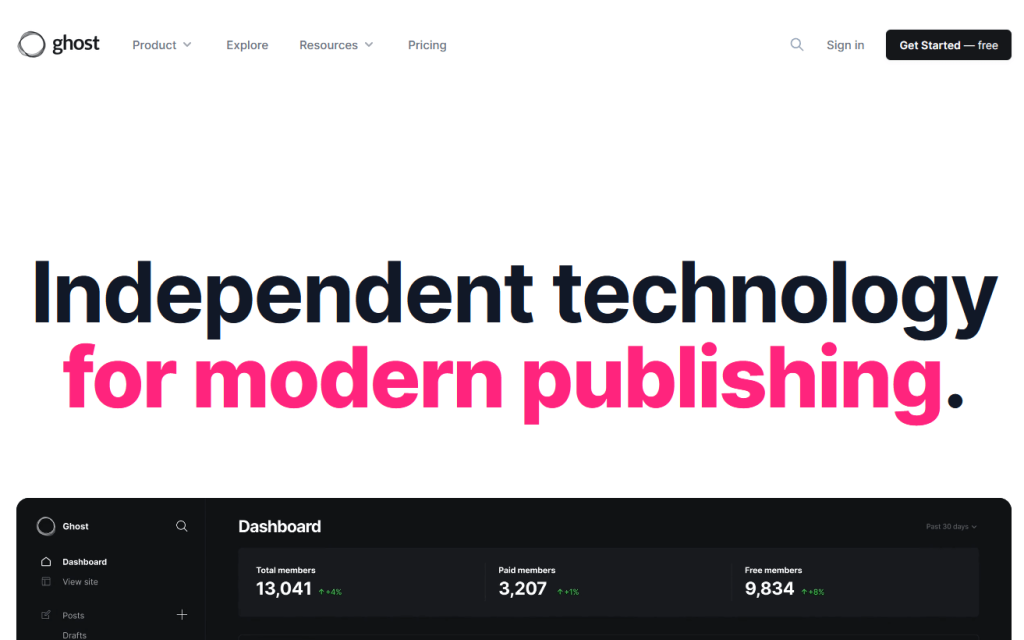
Ghost is tailored for writers and publishers focusing on content creation and monetization through subscriptions.
Its minimalist design emphasizes content, offering a clutter-free writing and reading experience.
Ghost supports direct monetization via memberships and subscriptions, making it a viable platform for bloggers aiming to build a paid community around their content.
The platform’s SEO optimization and fast loading times further enhance its appeal to serious content creators.
To provide a comprehensive overview, here’s a detailed table highlighting the five most important pros and cons of using Ghost for blogging in this year.
| Pros | Cons |
| 1. User-Friendly Interface: Ghost offers a clean, intuitive interface that simplifies content creation and management, making it accessible for bloggers of all skill levels. | 1. Learning Curve for Non-Technical Users: Despite its user-friendly design, individuals without a technical background may find it challenging to utilize all of Ghost’s features to their fullest. |
| 2. SEO Optimization: Built with SEO in mind, Ghost includes features like automatic sitemaps and fast loading times, helping bloggers improve their site’s visibility and search engine ranking. | 2. Limited Themes and Customizations: Compared to other platforms, Ghost has a smaller selection of themes and customization options, which might limit creative expression. |
| 3. Speed and Performance: Ghost is known for its exceptional speed and performance, providing a seamless experience for both bloggers and their audience. | 3. Higher Cost: Ghost’s advanced features and professional hosting services come at a higher price point, making it less accessible for hobbyists or those on a tight budget. |
| 4. Built-in Membership and Subscription Features: Ghost allows bloggers to easily monetize their content through memberships and subscriptions, offering a direct way to generate revenue from their audience. | 4. Complexity in Setup and Maintenance: Setting up and maintaining a Ghost blog can be complex, requiring a certain level of technical expertise, especially for customizations and integrations. |
| 5. Open Source with Active Community: As an open-source platform, Ghost benefits from a vibrant community of developers and users who contribute to its continuous improvement and offer support. | 5. Limited E-commerce Capabilities: For bloggers looking to incorporate extensive e-commerce features into their site, Ghost might not be the most suitable platform due to its limited capabilities in this area. |
In conclusion, Ghost presents a compelling option for bloggers in 2024, balancing advanced features with a focus on content creation and audience engagement.
However, potential users should weigh its pros and cons carefully to determine if it aligns with their blogging needs and technical capabilities.
5. Substack

Substack introduces a unique approach by combining blogging with email newsletters, allowing writers to monetize their content through subscriber fees.
This platform simplifies the process of creating and distributing content, making it accessible for writers without technical expertise.
Substack’s model is particularly suited for authors and journalists seeking direct engagement with their audience.
While it offers less customization than traditional blogging platforms, its focus on content and community building offers a compelling alternative.
Below, we delve into the five most important pros and cons of using Substack for blogging in 2024.
| Pros of Substack | Cons of Substack |
| 1. Simplified Email Newsletter Integration: Substack seamlessly integrates blogging with email newsletters, making it easier for writers to reach their audience directly in their inboxes. | 1. Limited Customization Options: Compared to other platforms, Substack offers fewer customization options for the look and feel of your blog, which might not suit everyone’s needs. |
| 2. Monetization Made Easy: Substack provides a straightforward way for bloggers to monetize their content through subscriptions, without the need for external tools or platforms. | 2. Dependence on Email Lists: Success on Substack heavily relies on building and maintaining a strong email list, which can be a significant challenge for new bloggers. |
| 3. User-Friendly Interface: The platform is designed with simplicity in mind, making it accessible for bloggers of all skill levels to publish their content without technical hurdles. | 3. Limited SEO Capabilities: Substack’s focus on email means it may not offer the same level of search engine optimization (SEO) features as other blogging platforms, potentially limiting discoverability. |
| 4. Strong Community Support: Substack hosts a vibrant community of writers and readers, fostering an environment of engagement and feedback that can be invaluable for bloggers. | 4. Revenue Share Model: While monetization is straightforward, Substack takes a percentage of subscription revenues, which may affect overall earnings. |
| 5. Focus on Content: With its minimalistic approach, Substack puts the emphasis on content rather than design, allowing writers to focus on what they do best. | 5. Lack of Advanced Analytics: The platform offers basic analytics, which might not be sufficient for bloggers looking to deeply understand their audience behavior and preferences. |
In conclusion, Substack presents a compelling option for bloggers in 2024, particularly for those focused on building a direct relationship with their audience through email.
However, potential users should weigh its limitations, especially in terms of customization and SEO, against its benefits to determine if it aligns with their blogging goals and strategies.
6. Blogger by Google: Budget-Friendly Blogging
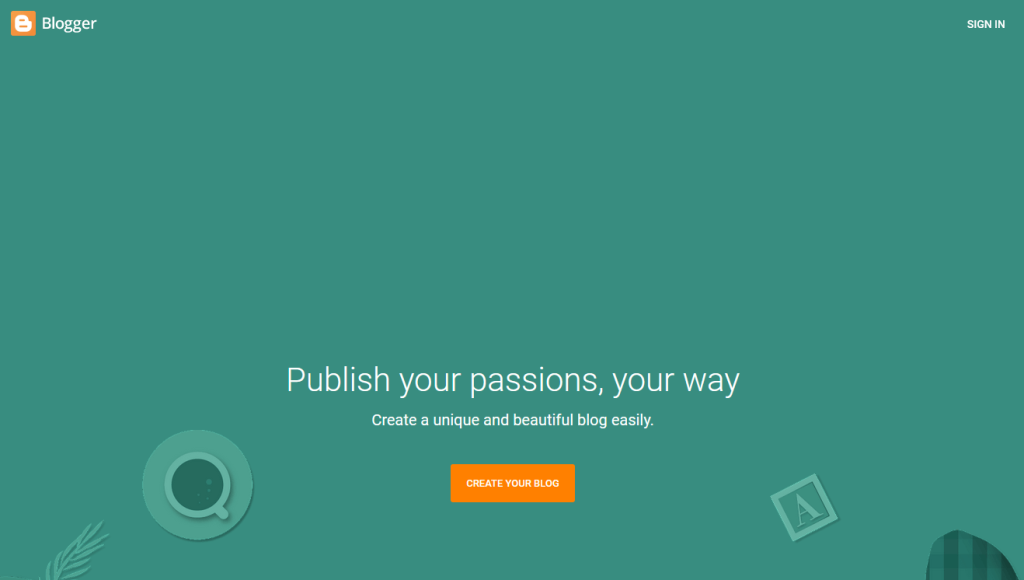
Blogger by Google provides a cost-effective solution for individuals stepping into the blogging world.
It offers free hosting and the option to connect a custom domain at no additional cost.
Blogger’s integration with Google’s ecosystem, including Analytics and AdSense, facilitates traffic analysis and monetization.
While it may lack the advanced features and design flexibility of its competitors, Blogger remains a reliable platform for beginners and those blogging on a budget.
To provide a comprehensive understanding, here’s a detailed table outlining the five most important pros and cons of using Blogger for blogging in this year.
| Pros | Cons |
| 1. Free to Use: Blogger is a completely free platform, making it accessible for anyone looking to start a blog without financial commitment. | 1. Limited Customization: Compared to other platforms, Blogger offers limited options for customization, which can be a drawback for those looking to create a unique blog design. |
| 2. Easy to Set Up: With its user-friendly interface, Blogger allows individuals to set up their blog quickly, without the need for technical knowledge. | 2. Limited Plugin Options: Blogger has fewer plugins and add-ons compared to platforms like WordPress, which can limit functionality and features. |
| 3. Google Integration: Being a Google product, Blogger offers seamless integration with other Google services like Google Analytics and AdSense, enhancing the blogging experience. | 3. SEO Limitations: While Blogger is SEO-friendly, it has certain limitations in SEO customization options compared to more advanced platforms, potentially affecting search engine visibility. |
| 4. Reliable Hosting: Since Blogger is hosted on Google’s servers, blogs benefit from reliable uptime and fast loading speeds, contributing to a better user experience. | 4. Less Professional: Blogger’s simplicity and design options can make blogs look less professional, which might not be suitable for all types of content creators. |
| 5. Security: Google’s robust security measures protect Blogger blogs from common security threats, offering peace of mind to bloggers. | 5. Platform Control: Google controls Blogger, meaning they can suspend or remove blogs at their discretion, posing a risk to blog continuity. |
In conclusion, Blogger by Google remains a viable platform for blogging in 2024, especially for beginners or those looking for a cost-effective solution. However, it’s important to weigh its limitations against its benefits to determine if it’s the right platform for your blogging needs.
Niche Platforms for Specific Needs
Medium and LinkedIn: Building an Audience
Medium shines as a platform for writers aiming to reach a built-in audience passionate about quality content.

It prioritizes engagement and interaction, making it a prime choice for authors looking to establish a strong reader base without the upfront challenge of attracting traffic.
| Pros | Cons |
| Medium blogs often outrank personal blogs in search engine results pages (SERPs), enhancing visibility. | Limited customization options restrict the ability to personalize the look and feel of the blog. |
| Access to a built-in audience, which can increase readership without extensive marketing efforts. | Revenue options are limited, making it challenging for bloggers to monetize their content directly through the platform. |
LinkedIn, on the other hand, serves professionals seeking to assert thought leadership within their industry.

It allows for the publication of articles directly on the platform, facilitating connections and discussions within a user’s professional network.
| Pros | Cons |
| LinkedIn posts often outrank other websites in search engine results pages (SERPs), enhancing visibility. | Limited customization options for personal branding compared to dedicated blogging platforms. |
| Access to a large, professional network which can increase post engagement and reach. | Content reach can be unpredictable due to algorithm changes, impacting visibility. |
Both platforms offer unique advantages for audience building, with Medium focusing on broad reader engagement and LinkedIn targeting professional networking and visibility.
Emerging Platforms: Write.as and Tumblr
Write.as caters to writers seeking a minimalist, distraction-free environment for both personal and professional blogging.

Its emphasis on privacy and simplicity attracts a niche audience that values content over complexity.
| Pros | Cons |
| Minimalist interface promotes focus on writing | Limited customization options for blog design |
| Strong emphasis on privacy and anonymity | Not ideal for those seeking built-in social networking features |
Tumblr, conversely, combines blogging with social networking, offering a vibrant community for sharing and discovering content.
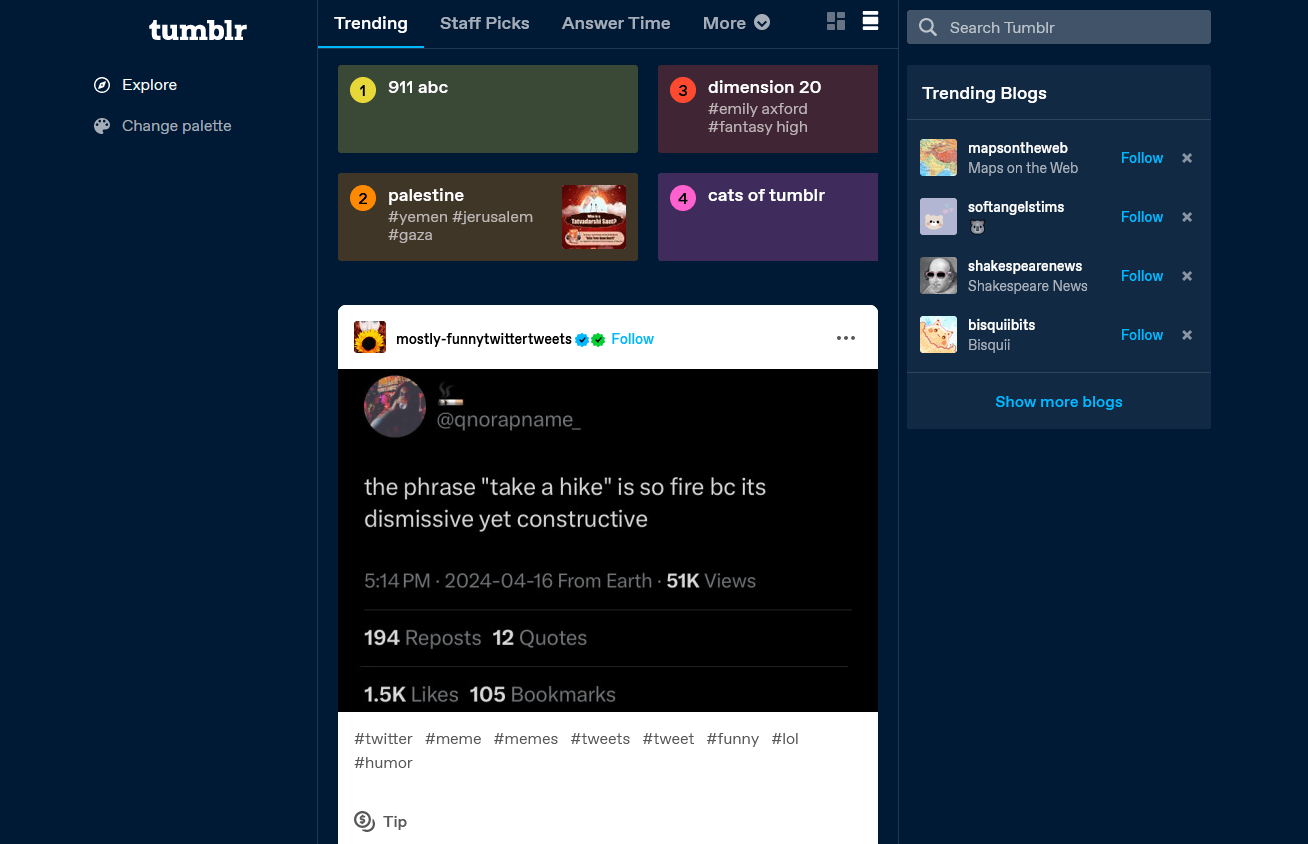
It’s particularly popular among younger audiences and creatives looking for a platform that supports multimedia posts, from text and images to GIFs and videos.
| Pros | Cons |
| Tumblr offers a highly user-friendly interface, making it easy for beginners to start and manage their blogs. | Tumblr’s customization options are limited compared to other platforms, restricting the ability to create a unique blog design. |
| It has a built-in audience and social networking features, facilitating content sharing and engagement within the Tumblr community. | The platform has a reputation for not being as professional as other blogging platforms, which might not be suitable for all types of content creators. |
These emerging platforms provide unique environments tailored to specific blogging needs and preferences, from the simplicity and focus of Write.as to the dynamic, community-driven nature of Tumblr.
Making the Right Choice
Choosing the ideal blogging platform in 2024 hinges on aligning platform capabilities with your blogging goals, technical skills, and content strategy.
WordPress.org suits those desiring customization and control, while Wix and Squarespace cater to users valuing design and simplicity.
For monetization through content, consider Ghost or Substack. Evaluate each platform’s features against your needs to choose the best foundation for your blogging journey.
